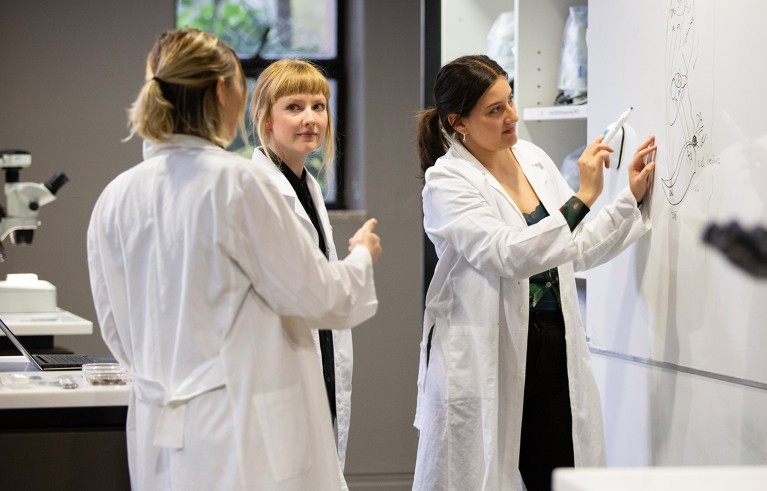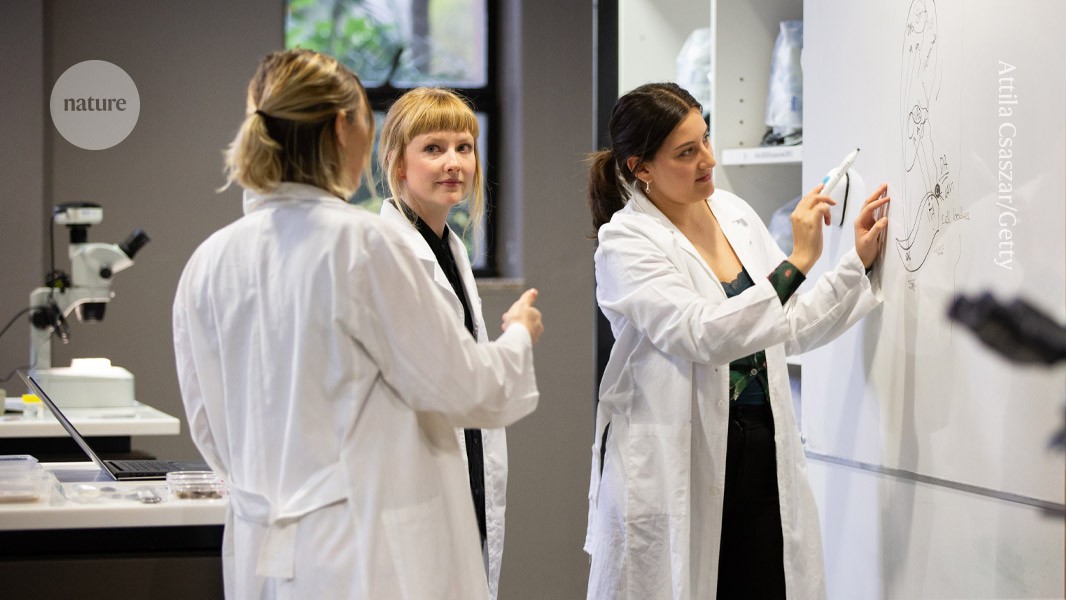
Research output was a criterion for promotion at almost all institutions included in the study. Credit: Attila Csaszar/Getty
To become a professor in Honduras, you need to contribute to the community. In Ireland, you need to publish papers, but also be publicly visible. And in the United States, your publication record takes primacy in promotions, but impact and research quality are also being increasingly considered.
The criteria for assessing researchers for promotion to full professorship, and the incentives they foster vary widely around the world, says Yensi Flores Bueso, who has lived in all three countries. A molecular biologist from Honduras, she later moved to Ireland and has spent the past year in Seattle, Washington.
Bueso, affiliated with University College Cork in Ireland, has co-authored one of the largest and broadest efforts to catalogue and analyse the way that institutions advance researchers1. The study, published in Nature today, identifies trends in the academic-promotion criteria of nearly 250 universities and government agencies worldwide.
“The results are very interesting,” says Lutz Bornmann, a sociologist who studies the science of science at the Max Planck Society in Munich, Germany. Although the analysis represents only a fraction of the higher-education institutions worldwide, which could be as high as 90,000 by some estimates, Bornmann says that it offers valuable insights.
Metrics game
Bueso and her colleagues collected hundreds of policy documents from 190 academic institutions and 58 government agencies and analysed them for promotion criteria. The documents covered 121 countries or regions in 27 languages, and were collected between 2016 and 2023.
Some 97% of the documents included research output as a criterion for promotion, and 92% specified quantitative metrics such as number of publications, patents, citations and journal impact factor. Some institutions even gave extra credit for a researcher’s rank in their papers’ author lists. Some 77% of institutions also included qualitative metrics among their criteria, such as societal impact and the publication or journal’s quality.
Analysis revealed that institutions in Asia prioritized research outcomes and impacts but placed less emphasis on visibility and wider engagement, and professional experience than did those in Europe. Institutions in Latin America relied less on output metrics and visibility and engagement compared with institutions in Europe. And those in Oceania focused more on outcomes and impact.
Several international efforts, such as the San Francisco Declaration on Research Assessment, have pushed for eliminating the use of research metrics such as the journal impact factor to evaluate researchers, because of concerns about transparency and relevance, among other issues. They instead suggest that assessments look at a paper’s research quality and content.


